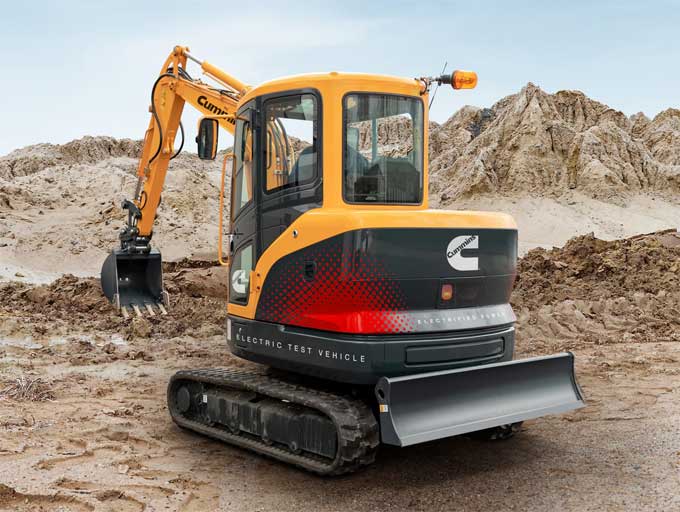
Wide Range of Electric Power Construction Vehicle in Future Construction Use

Construction has made extensive use of electric vehicles (EVs). Originally reserved for niche applications, such as non-mobile equipment, the smallest of compact excavators, and the largest mining trucks, electric power sources are now being used for all types of machines.
Trucks only travel short distances were the first to be electrified, as they are shunt trucks. There are now long-haul and work trucks on the market.
A Wider Range of Electric Vehicles Available
Cummings & XCMG
A compact electric excavator developed by Cummins and XCMG can lift 3.2 metric tons. A batch of Cummins BM5.7E batteries is using in this prototype, which provides 45kWh of power and works for eight hours without recharging. It has been possible to buy small compact excavators as electric vehicles for some time. But this 3.5-ton machine is the largest, showing that batteries can power larger equipment for longer periods.
Case Construction Equipment
Case Construction Equipment developed the 580 EV backhoe. Known as Project Zeus, the 580 EV offers the same power and performance as other diesel-powered backhoes and offers substantially lower daily operating costs. The battery pack powers the device. It can last eight hours depending on the application, and it powers by 480 volts, 90 kilowatt-hours of lithium-ion.
Bobcat
In Bobcat?s opinion, the construction industry can now be sustained by electric technology. The company produces three electric loaders. Powered by a lithium-ion battery and powered by hydraulics, the E17E prototype is electric over hydraulic. The Bobcat S70 skid steer loader, the smallest in the Bobcat lineup, is powered by an electric engine and driven by hydraulics.
Their T76e is fully electric. It does not contain any fluids. A traditional mechanic is not present inside the machine. Machines like this are not being marketed because they are concept machines.
Off-road and on-road equipment powered by electricity
Zoom-lion
The ZTC250N-EV is Zoom-lion's first electric-powered truck crane. In addition to reaching a maximum speed of 56 mph, the 30-ton pure electric-powered truck crane can increase grade ability by 50 percent and reduce energy costs by 35 percent, the company states.
Liebherr
Its portfolio includes two mixers with electrical drum drives manufactured by Liebherr. Due to their proximity to populated areas, these trucks are even more critical to reduce emissions since they contribute to high carbon dioxide levels in areas with lots of pedestrian traffic.
Due to optimized thermal management for batteries and continuous operation throughout the day despite the cold, Liebherr says these new machines can handle very thick concrete consistencies at full capacity without any issue during winter operation.
Additionally, batteries must charge quickly to last for a long time. As part of a joint venture with JLG, the Deutz 360 Volt has developed a battery that is capable of being fully charged in less than four hours. A battery powers a 40-kW electric motor. The driver will drive the arm, while the operator will operate the arm. Various JLG telescopic handlers come with this system.
Advantages of Electric Engines
Some manufacturers design diesel-like electric engines that have the same power output as diesel engines without drawbacks. Additionally, EVs can deliver instant torque and peak torque at any operating speed, while diesel engines on idle must build power before lifting a load.
Both diesel and electric EVs are commercially available, but there may be a time when diesel is not available for some machine categories.
To learn more, watch the following video tutorial.
Video Source: Volvo Construction Equipment

Image Courtesy: oemoffhighway.com

